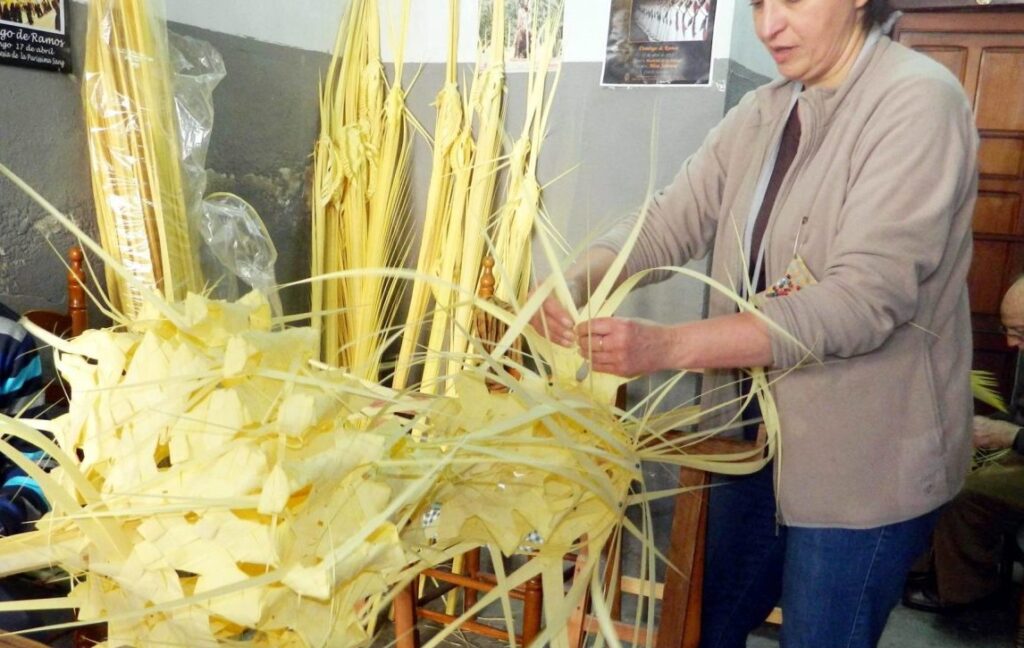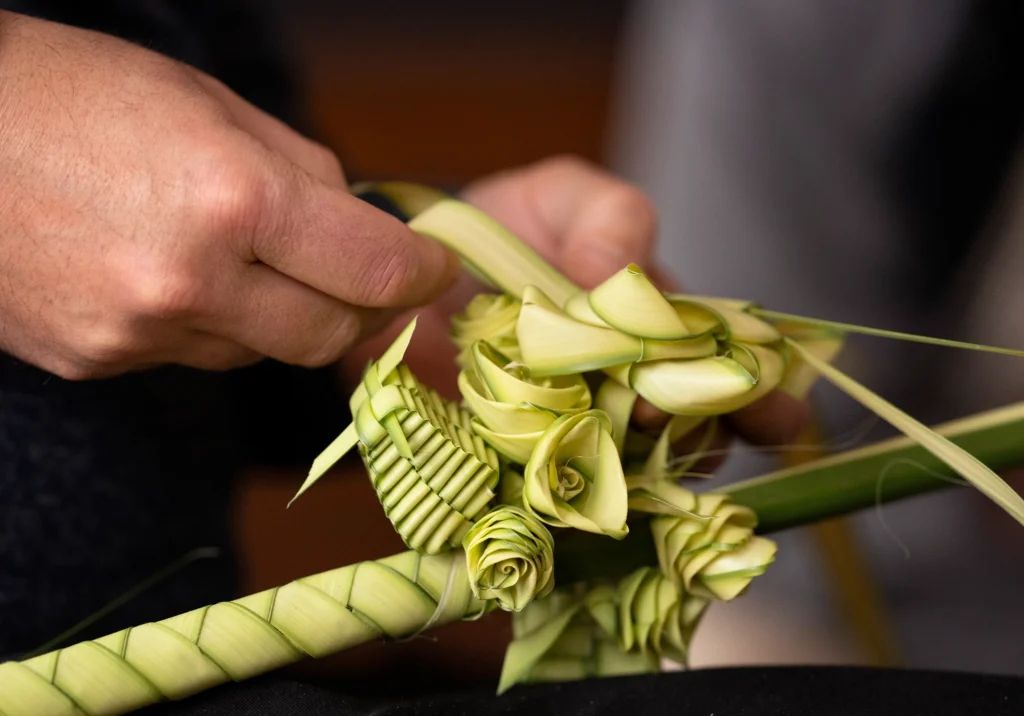Wednesday 21st January 2026
EXPRESSIONS OF INTEREST are sought for this new 1 day Spanish Culture & Cuisine trip.


The white palm is the raw material resulting from a traditional treatment applied to the palm tree. It is used to make the handicrafts displayed in the Palm Sunday procession, in Elche and throughout Spain.
Programme
08.30 hrs: Departure from Golden Star Apartments, Calle Bruselas, Javea Arenal. 08.45 hrs: Departure from Interiors (opposite side of the road), Avda Ausias March,Javea port.
09.00 hrs: Pick up at Mas y Mas, N332, if required. Refreshment break enroute.
11.00 hrs: Arrival at the Museu Escolar de Puçol, Elche, for a guided tour and the White Palm Weaving Workshop.



The preparation of the palm tree begins with tying the fronds. The palm keeper climbs to the top of the tree and binds the lower foliage, shaping it into a cone. Then, he finishes enclosing the top, a task known as “encaperuzado” (hooding). This was traditionally done with a “vellet,” a type of covering made from dried palm fronds; later, with the advent of synthetic materials, the fronds began to be covered with black plastic. This deprivation of light prevents the palm from photosynthesizing and therefore prevents the fronds from maintaining their characteristic green colour, which is precisely what the palm keeper wants to avoid.


About two or three months before Palm Sunday, the palm keeper climbs the tree again to remove the “vellet” and cut the fronds, which, having been deprived of sunlight, have turned yellowish. To preserve their colour and freshness, the palm fronds are cleaned in tubs filled with water and bleach, where they soak for a couple of days. Once cleaned, the fronds are placed in sulfur chambers—dark, airtight rooms with water on the floor—where sulfur is burned after the fronds are placed against the walls. Because the room remains sealed, it maintains a high humidity level, which keeps the fronds soft; without this, they would dry out, lose their firmness, and their characteristic yellow colour.



The leaves are worked by braiding and folding to make the curly palm bouquets. These are made in workshops—or in the family home—where, while some make the basic structures, others make the decorations, parts that are joined by sewing. In the workshop, in addition to learning the entire process, we will make some little decorations, such as the bead and the rose.
14.00 hrs: Reboard our coach and travel to a nearby restaurant.
14.30 hrs: Lunch
16.45 hrs: Reboard the coach for our return to Javea.
18.45 hrs: Approx. arrival in Javea.
PRICE: will be published when the restaurant has been confirmed. Only expressions of interest at this stage to the group leader:
Angela Chantry
spanish.culture.cuisine@u3ajavea.com
